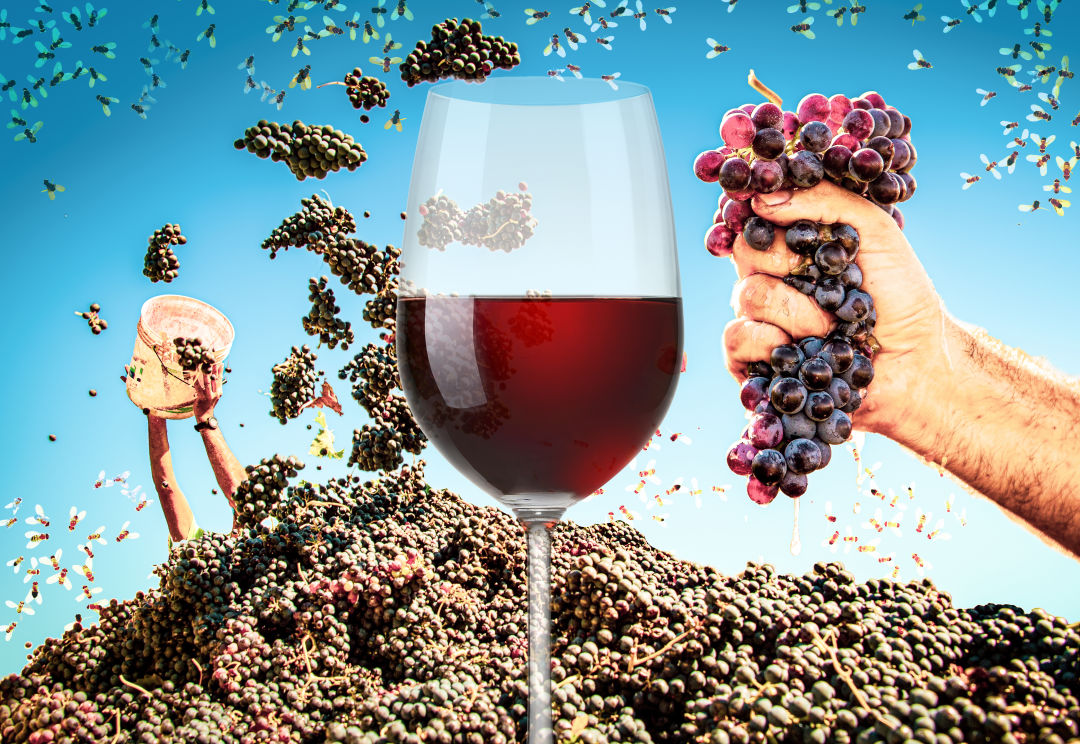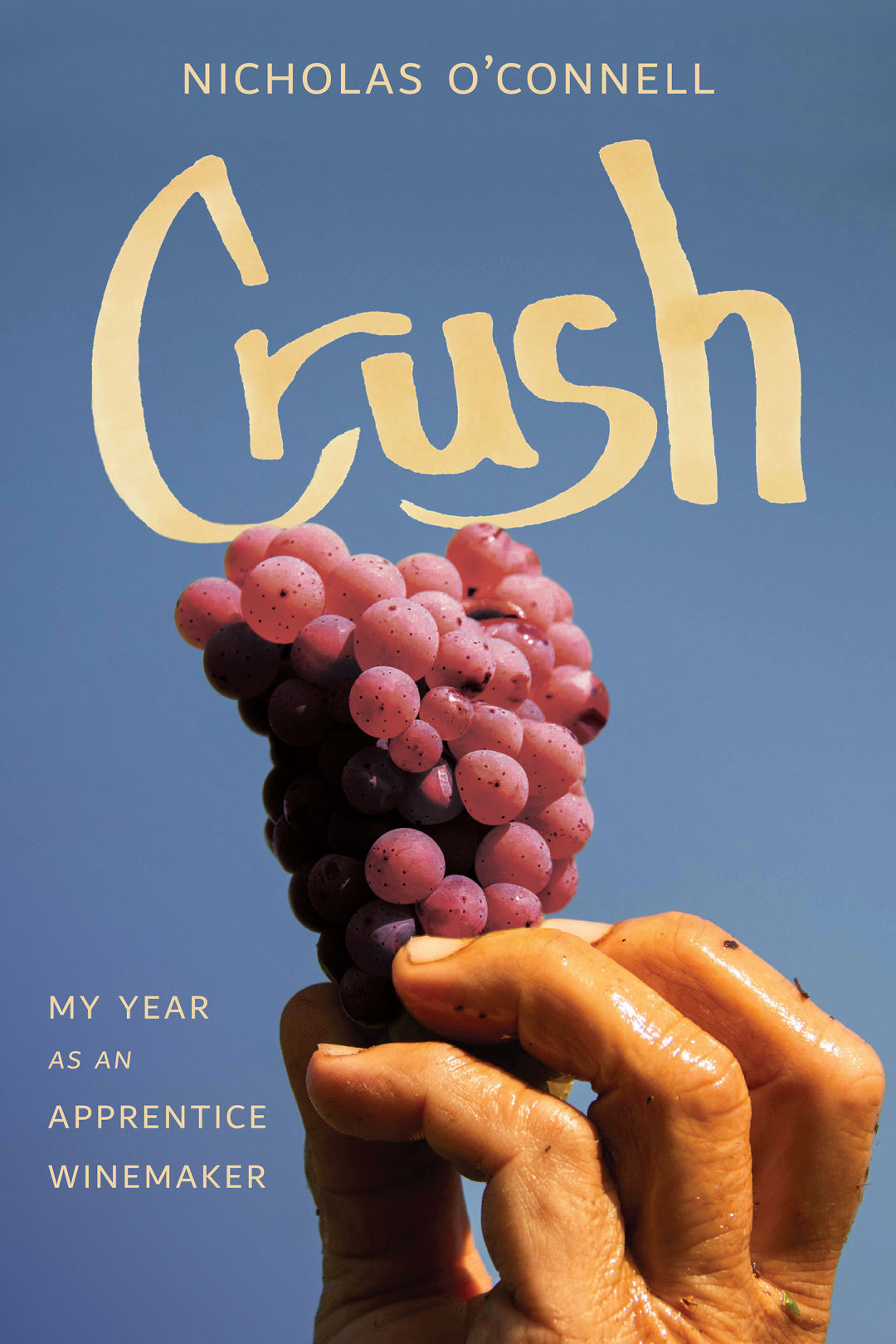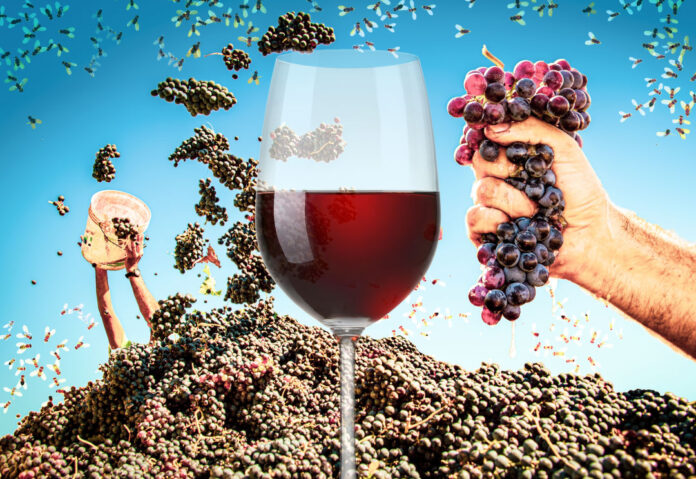This post was originally published on this site

The following is adapted from the author’s new book, Crush: My Year as an Apprentice Winemaker.
It’s fall and we’re infested. Clouds of fruit flies fill the air. They buzz around my wife Lisa and me at dinner. They chew the chilies hanging in our kitchen, raining a fine red powder on the floor. They roost on the cupboards. They fornicate on the refrigerator. They threaten to overpopulate our house and our Seattle neighborhood as well.
“You have them, too,” says a neighbor. “They’re bad this year!”
“Yes,” I say, nodding, as if it’s an act of God. But it’s no accident that our house and neighborhood are infested. A ton of Washington state’s finest cabernet grapes sits in our basement, fermenting into what I hope will be a stellar new vintage. Like most oenophiles, I’d long fantasized about making my own wine—the romance, the poetry, the passion of it! Now that I’ve been doing it for a while, another thing also comes to mind—the fruit flies!
My relationship with the insects is a complicated one. Their appearance coincides with the harvest, one of my favorite times of the year. Sometime around the middle of October, I never know exactly when, I get the call, “The grapes are in.” I drop what I’m doing, load plastic garbage cans into the truck, and drive to the sunny eastern side of the state where the best vineyards are located—Sagemoor, Klipsun, Ciel du Cheval—the names are beautiful to me.
As the members of my Les Copains wine co-op (really we’re a group of friends who love to make wine) arrive at our house to begin crushing grapes, the first reconnaissance patrols of fruit flies appear. They buzz around me excitedly, making their distinctive right-angle flight patterns, intoxicated by the smell of the juice.

Author Nicholas O’Connell (pictured without his fruit fly friends).
At first, the flies add to the festive atmosphere of the crush. We dump container after container of grapes into a machine called a stemmer crusher, which does exactly what its name implies: stems and crushes grapes. We sample the sweet, sticky grape juice as well as previous vintages to see how they compare. Crush is a time to catch up with everyone and drink wine together. By the end of the night, we’re comparing our vin du garage to Château Lafite-Rothschild. Our hubris knows no bounds.
After crushing the grapes into the large plastic tote, I add potassium metabisulfite to the must to stun the wild yeast on the grapes. Some winemakers omit this step, allowing the wild yeast to ferment the wine, but as amateurs we have a less controlled environment and use cultured yeast for a more predictable fermentation.
Next, I dump packets of cultured yeast into a pitcher of grape juice and leave it overnight. The next morning, yeast foams over the top of the pitcher. Fermentation!
Taking the pitcher down to the garage, I dump it over the mass of fermenting grapes, which is called the must. The grapes are fat, shiny, with a rich sweet smell. Using a food grade white plastic shovel, I mix the yeast into the grapes, agitate the glistening mass, and get sticky juice all over my hands. The temperature in the garage is around 70, boosted by a small space heater. This helps the fermentation take off.
Later that evening, I return to the garage. The fruit flies circle excitedly, but there seems to be no change in the must. I dip the shovel into the grapes, moving the heavy, sticky mass, hoping to energize the yeast. Have I done something wrong?
The next morning, more fruit flies fill the garage.
“Hi fellas!” I say, grabbing the shovel. The flies buzz companionably, intoxicated by the smell of yeast and fermenting wine. At this point, the fruit flies are a nuisance, not a danger to the wine. But as the fermentation slows, the odds increase that the acetobacter bacteria, which they carry on their dirty little feet, could turn the must into acetic acid, or vinegar, a dire prospect since these grapes cost nearly $2 a pound, not including the hours of labor that went into crushing them. It still rankles that the bacteria once ruined a barrel of our delicious 1995 Cabernet.
The next morning, a scum of brownish bubbles appears on top of the grapes. The thermometer reads 80 degrees, a promising sign. The yeast is eating the sugar in the grapes, turning it to alcohol and CO2. Churning the grapes with the shovel, I inhale the heady perfume of CO2, yeast and grape juice. Fruit flies circle around me, intoxicated by the smells.
I’m pleased with the progress of the fermentation and hope that no problems occur. If the fermentation doesn’t take off, or gets stuck, the wine can be ruined. This is one of the reasons we used cultured yeast. Still, fermentations with cultured yeast can get stuck. I’d like to see more vigor in the fermentation.
The next day, the thermometer reads 83 degrees. The grape skins rise above the juice, floating in a layer over the liquid, creating a cap. Yes! The fermentation is picking up. I use the shovel to punch down the cap, making sure that the skins have plenty of contact with the juice, ensuring the wine with have plenty of color and tannins.
Over the next few days, the temperature rises to the low-90s. The cap continues to rise. I hear a low seething sound as the yeast gobbles the sugar. The fruit flies can’t contain their excitement. Clouds of them fill the garage, buzzing around me as I break the cap.
Things between us become strained. It would be fine if there were just a few of them, but an ever-larger cloud boils up to greet me. The parents become grandparents, great-grandparents, great-great grandparents. It’s hard to breathe without inhaling several generations.
The next day, the must reaches 95 degrees. I’m hoping it doesn’t go any higher. If the fermentation is too hot, it can yield “cooked” flavors in the wine, making it taste burnt or like caramel. Breaking the cap, I stir the liquid, hoping for the best. I turn off the heater to lower the temperature.
The following morning, the temperature falls to the low 90s. The cap begins to sink. Fermentation slows. The temperature drops. I continue to stir the must, monitoring its progress. The fruit flies buzz happily all around the house.
Lisa, a biology major, likes fruit flies, too, but has her limits. Clouds of flies swarm us at dinner, begrudging us every bite. “They’re all over the place,” she says. “I saw them getting into the toothpaste.”

A week or so later, when fermentation subsides, we press the wine and transfer it into barrels. We submit the wine to rigorous “quality control analysis,” meaning we taste it as we press it and speculate on its prospects, which improve the more we imbibe. The fruit flies dance around us as the dark purple liquid sloshes into the barrels. The spilled wine whips them into a frenzy. They land in it and paddle around, getting gloriously drunk on the last of the vintage.
The next morning, reality sets in. The grapes are gone. Chili powder appears on the floor. I set out traps. Almost immediately, they’re filled. The buzzing reaches a crescendo. Finally, I snap. I get out the Shop-Vac.
The cupboards and walls are bristling with flies. As I pass the hose over them, they struggle to hang on, but are quickly sucked into the maw of the machine. I am relentless, taking no prisoners, making pass after pass over the flies. After several days of this, peace reigns in the house.
A few days later, sipping our 1998 Cabernet-Merlot blend, which won a first place at the local county fair, I can afford to get philosophical about the flies. Sure, they’re pests, but a small price to pay for having a home winery. I relax my vigilance, take my hand from over my glass, and a moment later look up to see several flies drowned in the liquid, reminding me again that, like it or not, making wine and fruit flies are intertwined.
Lisa does not take things so philosophically. When several collect in her glass, she says, “From now on, do the fermentation at Tom’s house!”
“Okay,” I say, glad she didn’t mention how the barrels and winemaking supplies prevented her from parking in the garage. “Next year we’ll do the fermentation at Tom’s house.”
















